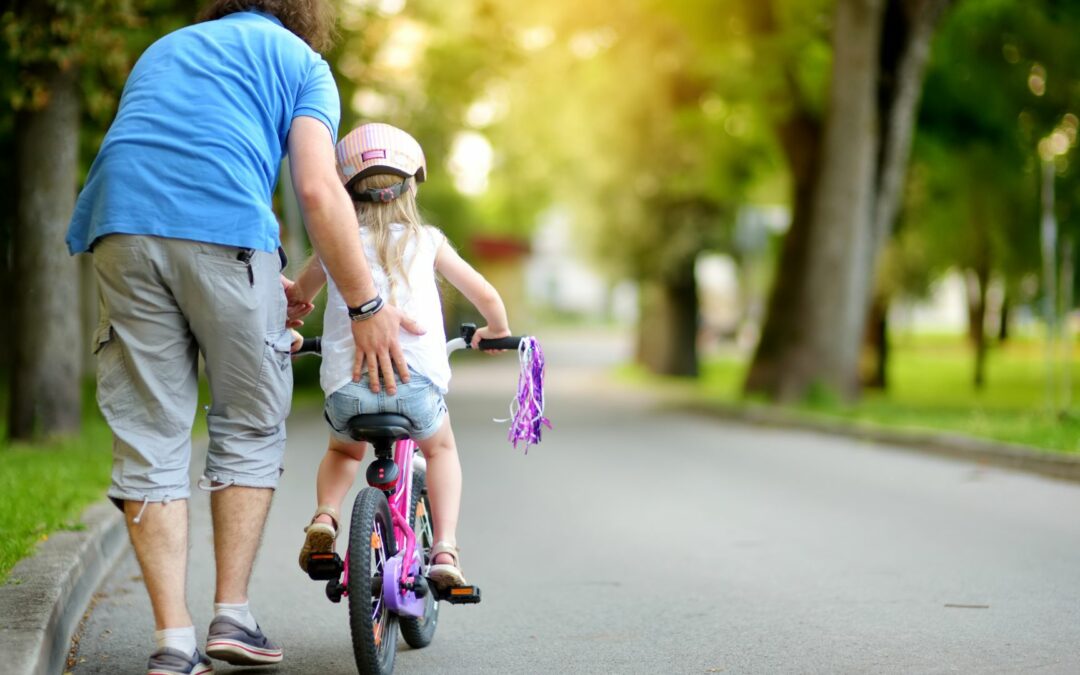Riding a bike is a common childhood activity and learning how to ride a bike may be a significant milestone in a child’s life. Tricycles are usually the first bikes a child rides. They do not need balancing, making it easier even for young children to sit and ride them. As children grow, it’s important for parents and nannies to ensure the bikes are safe and properly sized.
Two-wheel bikes
When it is time to ride a two-wheeler, there are several options. Children as young as 2 years old can ride a two-wheeler (if it’s properly sized) with training wheels. As they get older, they may move on to a balance bike. These are lightweight bikes without pedals and brakes and are ideal for children just learning to ride on two wheels. They let the child focus balancing and steering rather than pedaling. Children aged two to five years can ride balance bikes.
As the child grows, they can ride regular bikes with training wheels. These wheels serve the purpose of providing support to the rider and allow the child to concentrate more on pedaling than steering and balancing. Generally, they can start riding two-wheeled bikes without training wheels around the ages of four to eight as they have the physical coordination and agility required for riding a bicycle. Children who learn to ride a two-wheeled bike when they are around six to eight years old are usually less prone to injuries than those who learn to ride between three to five years of age.
It is important that the child have a bike that is age-appropriate and sized to the child’s frame. If possible, the child should sit on it and see if they can comfortably put their feet on the ground. They should be able to touch the ground with the sole of their foot. Many bikes are adjustable so they can be used for a longer period as the child grow. It may be tempting to buy a bike that the child can ‘grow into’ but this is not usually a good idea. If the bike is too large for the child, it may be difficult to control and maneuver and it increases the likelihood of accidents and falls. It may also discourage the child from riding at all.
Bike Sizes
So, how do you find the right sized bike for your child? Unlike adult sizing, where the bike frame determines size, in kids’ bikes the wheels set the proportions. Children’s bike wheels start small and wheels that are 24 inches in diameter are considered the last step before moving up to adult models. The chart below is a starting point for choosing your child’s bike, but the only way to find the right bike is a test ride. As you can see, both age and height are important considerations:
| Average age | Height | Bike Wheel |
| 2-4 years | 2’5″ – 3’2″ | 12 inch with training wheel |
| 3-6 years | 3’2″ – 4’0″ | 16 inch with training wheel |
| 7+ years | 4’0″ – 5’0″ | 20 inch |
| 10+ years | 4’6″ – 5’5″ | 24 inch |
Test rides
Once you have determined the wheel diameter, it’s time for test rides. A test ride is a great aid in choosing the right size bike for your child. Here are a few things to check out when putting a bike to the test:
- When the child is sitting on the seat of the bike, the balls of their feet should comfortably touch the ground. If not, the seat height is too high, which could make stopping more difficult. Some seats are adjustable, so check before assuming the bike is not a good fit.
- While pedaling, there are two potential problems indicating the bike is the incorrect size. If the child’s knees are bumping into the handlebars, the bike is too small. In contrast, if the child cannot pedal smoothly and looks to be hyperextending their legs, then the bike is too large.
- When standing up, the child should be able to straddle the bike’s middle bar with their feet flat on the ground with 1″ – 2″ of clearance. If the bike has to be tilted to fit under your child’s legs, it is too large.
- The child should be able to comfortably steer the handlebars while only slightly bending their arms. If they are overstretching, it can be another sign that the bike you’re looking at is too big.
Some bikes enable you to raise the seat and the handlebar stem for minor customizations in size. This can help with small growth spurts, but if these adjustments don’t resolve the issue, with comfort and function, then it may be time for a new bike. Local bike shops have experts who can help you with all your bike fitting needs.
If you are a nanny seeking to advance your childcare expertise, check out the Specialist Certification program at the Nanny Institute as it includes classes on fitness and how to support child athlete’s.


Recent Comments